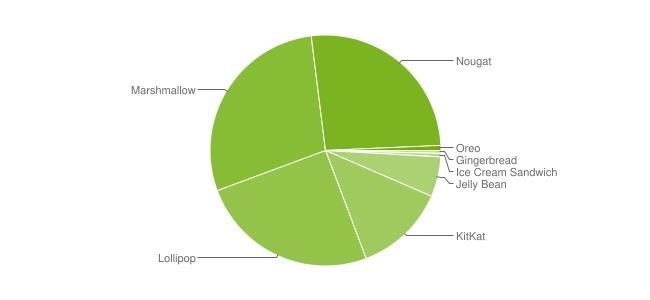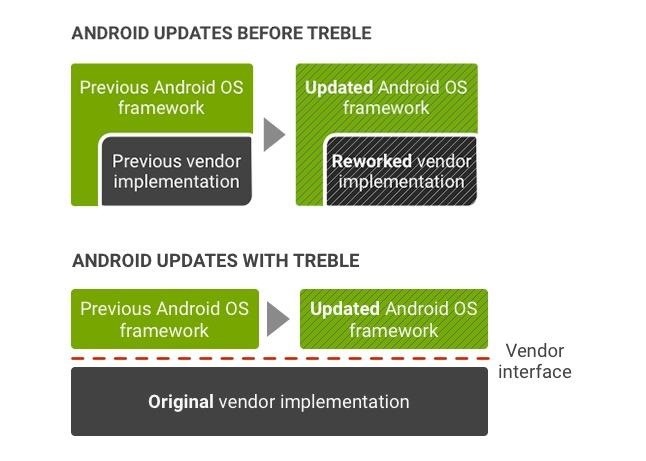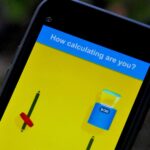The first developer preview build of Android P (Android 9.0) is right around the corner, but less than 1% of Android phones are running Oreo. The fragmentation on Android (the number of devices on different versions of the operating system) is staggering, and a problem that has plagued the operating system since it first debuted in 2008 — despite Google’s best efforts to fix it.
The Developer Preview system first came about as a way for developers and OEMs to test new versions of Android so they could quickly update their own apps and devices to support the latest version. The Android Oreo DP1 build came out in March 2017, and doesn’t seem to have helped much with Android Oreo adoption rates.
Eleven months later, Android 8.0 (Oreo) is still only on a meager 0.5% of Android devices — Android 8.1, just 0.2%. While Android 6.0 (Marshmallow) is the most popular version of the OS at 28.6%, devices as old as those running 4.4 (KitKat) are represented en masse at 12.8%.

To battle this, Google introduced Project Treble, which wholly changed the architecture of the Android OS framework. Project Treble “separates the vendor implementation (device-specific, lower-level software written by silicon manufacturers) from the Android OS framework via a new vendor interface.”
In other words, OEMs like Samsung and LG can update their devices by only updating the Android OS framework — without any “additional work required from the silicon manufacturers.” Unfortunately, Project Treble is only required for devices that launch with Android 8.0 and above. If a phone came with Nougat or lower pre-installed and receives an update to Oreo, it will only include Project Treble support if the manufacturer chooses to adopt the new feature.

In short, fragmentation is still a major problem with Android today, despite Google’s best efforts. While 25% of iPhone users are still running older versions of iOS, the 75% of people who are on the latest version puts Android’s 0.7% to shame. Hopefully, Android P will see better adoption numbers in a year’s time thanks to Project Treble, but in the meantime, you can see the status of the Oreo update for most major Android phones at the link below.
Hot Deal: Set up a secure second phone number and keep your real contact details hidden with a yearly subscription to Hushed Private Phone Line for Android/iOS, 83%–91% off. It’s a perfect second-line solution for making calls and sending texts related to work, dating, Craigslist sales, and other scenarios where you wouldn’t want to give out your primary phone number.
“Hey there, just a heads-up: We’re part of the Amazon affiliate program, so when you buy through links on our site, we may earn a small commission. But don’t worry, it doesn’t cost you anything extra and helps us keep the lights on. Thanks for your support!”











